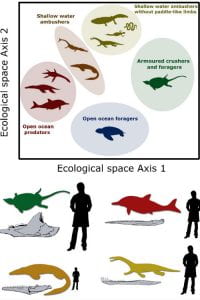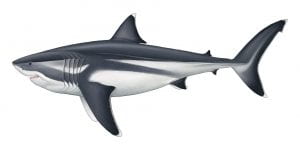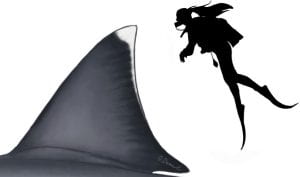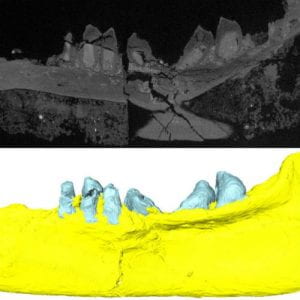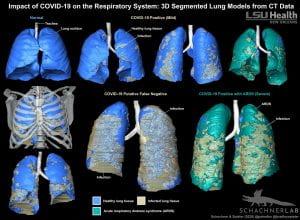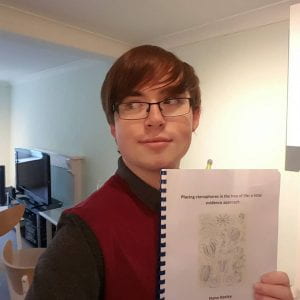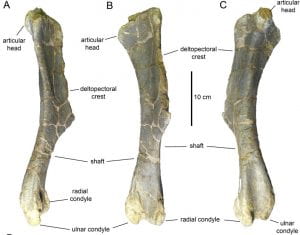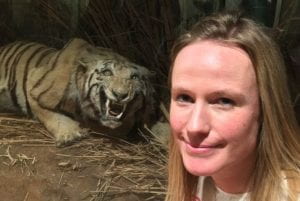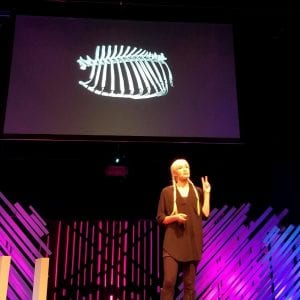T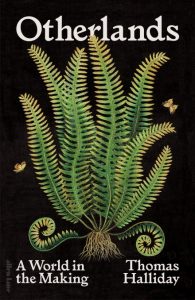 om Halliday, who completed the MSc in 2011, has just published his first book, ‘Otherlands’ to high critical acclaim. The publisher, Allen Lane-Penguin, provide this blurb, “Otherlands is an epic, exhilarating journey into deep time, showing us the Earth as it used to exist, and the worlds that were here before ours. Travelling back in time to the dawn of complex life, and across all seven continents, award-winning young palaeobiologist Thomas Halliday gives us a mesmerizing up close encounter with eras that are normally unimaginably distant.
om Halliday, who completed the MSc in 2011, has just published his first book, ‘Otherlands’ to high critical acclaim. The publisher, Allen Lane-Penguin, provide this blurb, “Otherlands is an epic, exhilarating journey into deep time, showing us the Earth as it used to exist, and the worlds that were here before ours. Travelling back in time to the dawn of complex life, and across all seven continents, award-winning young palaeobiologist Thomas Halliday gives us a mesmerizing up close encounter with eras that are normally unimaginably distant.
“Halliday immerses us in a series of ancient landscapes, from the mammoth steppe in Ice Age Alaska to the lush rainforests of Eocene Antarctica, with its colonies of giant penguins, to Ediacaran Australia, where the moon is far brighter than ours today. We visit the birthplace of humanity; we hear the crashing of the highest waterfall the Earth has ever known; and we watch as life emerges again after the asteroid hits, and the age of the mammal dawns. These lost worlds seem fantastical and yet every description – whether the colour of a beetle’s shell, the rhythm of pterosaurs in flight or the lingering smell of sulphur in the air – is grounded in the fossil record.”
Tom Holland, author of Dominion, says ‘The best book on the history of life on Earth I have ever read’. That’s pretty unequivocal praise. Otherlands is in the Sunday Times bestseller list for February and March 2022, and is already recommended as one of the best books of 2022.
In his MSc, Tom worked on fossil crocodilians from Central Asia, including a visit to see the specimens in Moscow. Since then, he has completed his PhD on the evolution of early fossil mammals, and is Honorary Researcher at the University of Birmingham.
Tom comments: “I loved my year as part of the Palaeobiology MSc cohort in Bristol, and it reaffirmed my desire to continue to study the history of life in all its aspects. From biomechanics to palaeoecology, from a day in the prep lab to a foreign museum visit, I was introduced to the diverse world of palaeontological research beyond taxonomy. In a sense, Otherlands is continuing that more complete vision of Earth history that I first encountered in Bristol more than a decade ago.



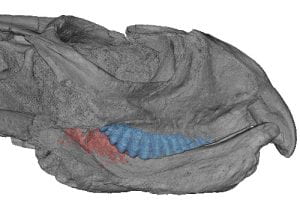 Bristol MSc student Thitiwoot Sethapanichsakul published the second paper from his MSc thesis, about the internal structure of tooth replacement in rhynchosaurs, a group of reptiles that walked the earth between 250-225 million years ago, in the Middle and early Late Triassic, before being replaced by the dinosaurs.
Bristol MSc student Thitiwoot Sethapanichsakul published the second paper from his MSc thesis, about the internal structure of tooth replacement in rhynchosaurs, a group of reptiles that walked the earth between 250-225 million years ago, in the Middle and early Late Triassic, before being replaced by the dinosaurs.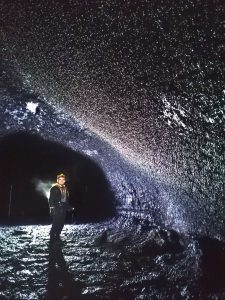 Since he graduated in 2021, Will Richardson writes that he has been working as a lava cave tour guide in Iceland, inside Víðgelmir lava cave. Here he is (left) in a spectacular view.
Since he graduated in 2021, Will Richardson writes that he has been working as a lava cave tour guide in Iceland, inside Víðgelmir lava cave. Here he is (left) in a spectacular view.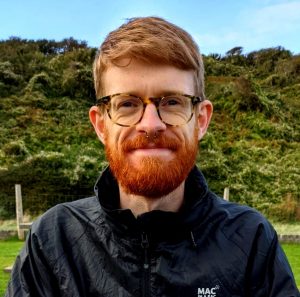 Thomas Farrell who completed the Palaeobiology MSc last year has been awarded the Geologists’ Association Curry Prize for his thesis: “New ecdysozoan worms from the Sirius Passet Lagerstätte and their implications for the evolutionary history of Ecdysozoa.” The project was supervised by Jakob Vinther.
Thomas Farrell who completed the Palaeobiology MSc last year has been awarded the Geologists’ Association Curry Prize for his thesis: “New ecdysozoan worms from the Sirius Passet Lagerstätte and their implications for the evolutionary history of Ecdysozoa.” The project was supervised by Jakob Vinther.
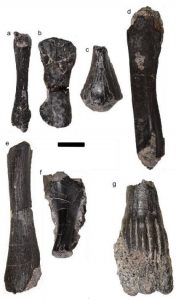 Harriet worked on specimens from Bristol City Museum as well as newly collected materials. During field work, Harriet noted large numbers of burrows and trails made by worms, clams, and king crabs. In fact, the king crab tracks and resting marks show that this had become a tidal zone, where the sea flooded in and out.
Harriet worked on specimens from Bristol City Museum as well as newly collected materials. During field work, Harriet noted large numbers of burrows and trails made by worms, clams, and king crabs. In fact, the king crab tracks and resting marks show that this had become a tidal zone, where the sea flooded in and out. om Halliday, who completed the MSc in 2011, has just published his first book, ‘Otherlands’ to high critical acclaim. The publisher, Allen Lane-Penguin, provide this blurb, “Otherlands is an epic, exhilarating journey into deep time, showing us the Earth as it used to exist, and the worlds that were here before ours. Travelling back in time to the dawn of complex life, and across all seven continents, award-winning young palaeobiologist Thomas Halliday gives us a mesmerizing up close encounter with eras that are normally unimaginably distant.
om Halliday, who completed the MSc in 2011, has just published his first book, ‘Otherlands’ to high critical acclaim. The publisher, Allen Lane-Penguin, provide this blurb, “Otherlands is an epic, exhilarating journey into deep time, showing us the Earth as it used to exist, and the worlds that were here before ours. Travelling back in time to the dawn of complex life, and across all seven continents, award-winning young palaeobiologist Thomas Halliday gives us a mesmerizing up close encounter with eras that are normally unimaginably distant.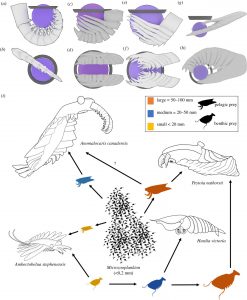 Other papers include Natasha Howell’s project on aposematism in mammals, published in Evolution, Giacinto de Vivo’s study of function in the anomalocarids, giant Cambrian predators, and Karina Vanadzina’s study of developmental change in planktic foraminifera during a speciation event.
Other papers include Natasha Howell’s project on aposematism in mammals, published in Evolution, Giacinto de Vivo’s study of function in the anomalocarids, giant Cambrian predators, and Karina Vanadzina’s study of developmental change in planktic foraminifera during a speciation event. Emma Bernard completed the MSc in Palaeobiology at Bristol , and has been Curator of Fossil Fishes at the Natural History Museum for some years. Here she talks about her job, and how she got there. It all started when she was young, collecting fossils and reading dinosaur books. She describes a typical week in her job, “I can be hosting a visitor looking at Devonian jawless fish, another looking at rays from the Eocene, supervising volunteers re-boxing lungfish tooth plates, taking images and measurements of Solnhofen specimens for a researcher in America… taking samples of a specimen for geochemical analysis… talking to a group of school children about fossilisation and identifying a fossil someone found on a beach”. Read more
Emma Bernard completed the MSc in Palaeobiology at Bristol , and has been Curator of Fossil Fishes at the Natural History Museum for some years. Here she talks about her job, and how she got there. It all started when she was young, collecting fossils and reading dinosaur books. She describes a typical week in her job, “I can be hosting a visitor looking at Devonian jawless fish, another looking at rays from the Eocene, supervising volunteers re-boxing lungfish tooth plates, taking images and measurements of Solnhofen specimens for a researcher in America… taking samples of a specimen for geochemical analysis… talking to a group of school children about fossilisation and identifying a fossil someone found on a beach”. Read more 

